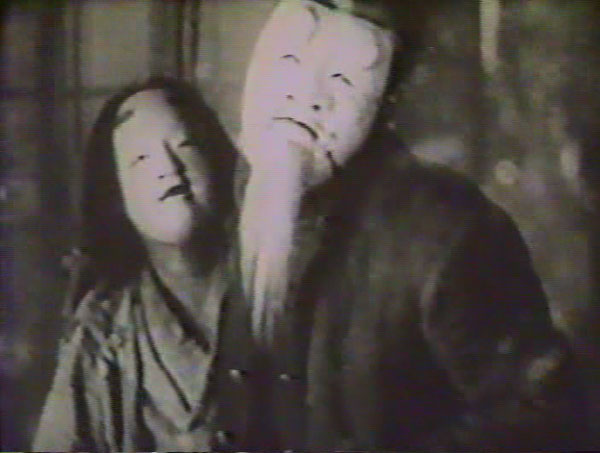Oh man, I don’t know what happened plot-wise, but clearly (dimly) we’d have an expressionist madhouse classic to beat Cabinet of Dr. Caligari on our hands here if we had a better print copy.

No intertitles, and I guess I was paying more attention to images and technique than trying to puzzle through the story, so even the one-line IMDB plot-blurb “a man takes a job at an asylum with hopes of freeing his imprisoned wife” is news to me. I thought he might have always worked there, maybe he imagines she’s his wife, but he’s either hallucinating – crazy enough to be at the asylum, but gentle enough to be given menial jobs – or maybe he becomes mad from hanging out there too long, or perhaps the ending is a dream… so either Caligari or Shock Corridor.

Watched it with Superchunk’s score playing on the stereo. Now Superchunk are heroes of mine, but they wouldn’t be my first choice to score a bonkers dream-logic silent film… worked pretty well, but maybe next time I’ll cook up a mix CD for the occasion.
Based on a short story by Yasunari Kawabata, who has other titles with interesting names to his credit and film adaptations by Naruse, Shimizu, and Kon Ichikawa.
Kinugasa made Gate of Hell, which I think I’ve heard of, and some 100 other films. I hope somebody has looked into this.
An IMDB user: “the film makes use of every single film technique available at the time: multiple exposures and out of focus subjective point of view, tilted camera angles, fast and slow motion, expressionist lighting and superimpositions among others.” V. Petric via Midnight Eye: “These devices… are used not for their own sake but to convey complex psychological content without the aid of titles.”
Silents Are Golden has a plot description: “An elderly man, a former sailor, works voluntarily at odd jobs in a lunatic asylum where his wife is confined after having attempted to drown her baby son in a fit of madness many years ago.”
Excerpts from M. Lewinsky’s well-informed interview on Midnight Eye:
The strongest direct influence was certainly Murnau’s Last Laugh. There was much debate in Japanese film magazines about this film – it was released in Kyoto in January and in Tokyo in mid-April 1926 (A Page of Madness was shot in May 1926) – and its having no intertitles. In a published enquiry “My Favourite Film”, Kinugasa chose Last Laugh saying he had seen it five times. If you compare the two films you will find many elements and images from the German film used in A Page of Madness, but transformed and integrated in a different structure.
The comparison with Dr. Caligari is quite pointless I think. This German film from 1919, despite being popular in Japan, is too different in its mood and making, and its treatment of madness has nothing in common with A Page of Madness.
There are many instances in A Page of Madness where the film relies on benshi narration to furnish crucial information. Without narration, without dialogue, the film at times is nearly incomprehensible.